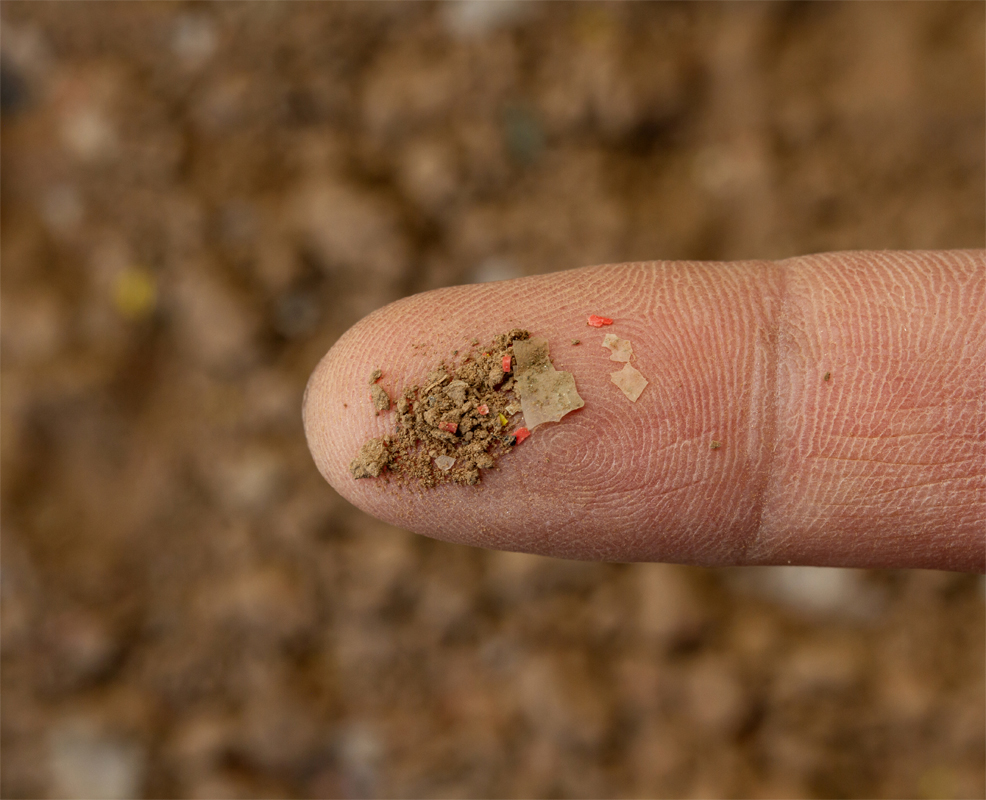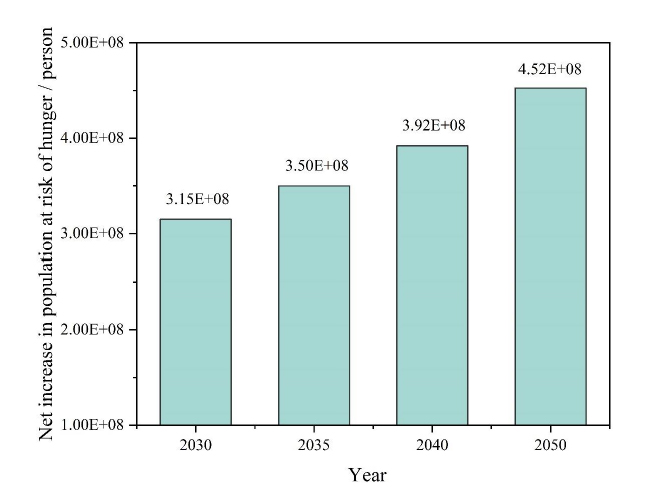
12th March 2025 Microplastics threaten global food security Without action to reduce plastic waste, as many as 400 million people could be at risk of hunger within two decades, according to a new study in the journal PNAS.
A new study finds that microplastic particles are significantly harming photosynthesis in plants and algae, leading to major food losses. Without action to mitigate plastic pollution, this could potentially put hundreds of millions more people at risk of hunger in the coming decades. Microplastics – tiny fragments of plastic, ranging in size from a nanometre to five millimetres in length – are now pervasive throughout our environment, from the deepest oceans to the highest mountains. Their omnipresence has already raised concerns about human health, but new scientific evidence reveals an even more alarming consequence: a threat to global food security. The research, led by Professor Huan Zhong at Nanjing University in China, assessed over 3,000 observations globally. It found that microplastics reduce the photosynthesis of land-based plants by 12% and marine algae (forming the base of the ocean food chain) by 7%. This results in worldwide annual losses of up to 361 million metric tons (MT) for crop production and up to 24 MT for seafood production. Asia is the region suffering the greatest crop losses from microplastics, accounting for nearly half the global total for wheat, rice, and maize. Wheat in Europe is also being hit hard, according to the study, along with maize in the United States. These crops are less commonly grown in South American and African countries and there is less data available for these regions. Microplastics are formed from the gradual degradation of plastic waste. These particles can reduce the amount of sunlight reaching a leaf surface, damage soil, release toxic chemicals, block nutrient and water channels within a plant, and lower chlorophyll content (the essential pigment for photosynthesis). These impacts can result in stunted growth and poorer agricultural productivity. Aquatic ecosystems are similarly impacted. The amount of plastic waste in the environment continues to grow rapidly. Professor Zhong and his team calculate that on current trends, 392 million people could be at risk of hunger due to microplastics by 2040, rising to 452 million by 2050.
The study is published this week in the journal PNAS. In addition to highlighting the risk to food supply, it also underlines an ecological imbalance that could threaten climate stability. Plants and algae play a crucial role in absorbing carbon dioxide from the atmosphere. With diminished photosynthetic capacity, there is less carbon sequestration, further exacerbating global warming. As the researchers write, the adverse effects of microplastics "are highly likely to extend from food security to planetary health." Efforts to curb plastic pollution experienced a significant setback recently, as nations failed to reach agreement on a UN treaty. However, with negotiations set to resume later this year, this latest research could play a critical role in shaping international policy. Professor Richard Thompson, a world-leading marine scientist at the University of Plymouth, UK, did not take part in this study, but commented on its findings. "Microplastics contaminate our planet from the poles to the equator," he said. "In my work as a marine biologist, from the shoreline to the deep sea, it is clear they contaminate rivers, lakes, and agricultural land. There is clear evidence that exposure leads to uptake by plants and animals. Numerous laboratory studies show the potential for harmful effects. This paper adds to that body of evidence, which points clearly towards the need for action. The opportunity for such action is at hand via the UN Global Plastic Treaty which is under negotiation. Ensuring the treaty addresses microplastic pollution is of key importance. "This study gives model predictions that help to highlight the potential for impacts," Thompson added. "While these predictions may be refined as new data become available, it is clear from the substantial body of evidence already available that we need to start towards solutions." Given the vast quantities of plastic that are forecast to be produced in the future – and the length of time taken for larger pieces to break down – what we are already seeing now is likely just the tip of the iceberg. The longer-term impacts could be even more substantial. "If we don't take action now," Thompson explained, "within the next 70 to 100 years, we'll see much more wide-scale ecological harm." Scientists are exploring innovative biotechnology solutions to mitigate the growing crisis. For example, recent discoveries have identified bacteria, such as Ideonella sakaiensis, capable of breaking down plastics in the environment. At the same time, the development and wider adoption of biodegradable plastics is gaining momentum, with new formulations able to degrade harmlessly in weeks or months, rather than persisting for decades or centuries. Such biological and material innovations, if successfully scaled up, may become powerful tools in addressing plastic pollution, complementing broader policy efforts and traditional recycling initiatives. Nevertheless, while these methods are promising, they should not detract from the urgent need to drastically reduce overall plastic consumption and disposal. Achieving long-term sustainability will require a comprehensive approach, combining novel technologies with meaningful reductions in plastic waste.
Comments »
If you enjoyed this article, please consider sharing it:
|
||||||








